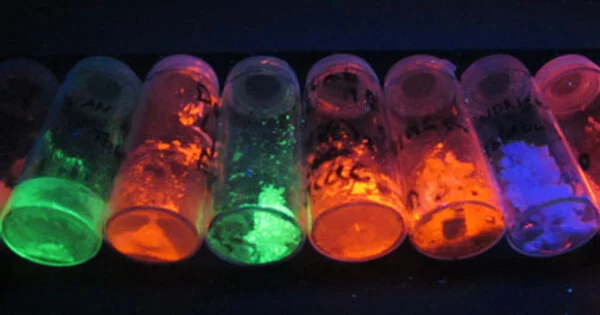According to the IUPAC definition, Luminescence is the “spontaneous emission of radiation from an electronically excited species (or from a vibrationally excited species) that is not in thermal equilibrium with its environment.” In contrast to “incandescence,” which occurs when an object is heated, a luminescent object emits “cold light.”
Luminescence is the emission of light by a substance or material that is not caused solely by high temperatures. It is the process by which a substance generates or emits light as a result of various energy interactions. Luminescent materials absorb energy in one form before emitting it as light in another. This phenomenon can occur in a variety of ways and is frequently observed in nature as well as used in a variety of technologies and applications.
In general, light is emitted as a result of electrons moving between different energy levels within an atom after being excited by external factors. However, unlike sonoluminescence, the exact mechanism of light emission in “vibrationally excited species” is unknown.
There are several types of luminescence, including:
- Fluorescence: The most common type of luminescence. Fluorescent materials absorb high-energy photons and instantly emit lower-energy photons. The wavelength and energy of emitted light are typically longer than those of absorbed light. Certain dyes, fluorescent markers, and minerals are examples of fluorescent materials.
- Phosphorescence: Phosphorescence is similar to fluorescence but differs significantly. After absorbing high-energy photons, phosphorescent materials can store the energy for a longer period of time before emitting light. Depending on the material, this delayed emission can last from milliseconds to hours. Phosphorescence is used in glow-in-the-dark toys and materials, as well as some exit signs.
- Bioluminescence: The production and emission of light by living organisms is known as bioluminescence. Certain organisms, such as fireflies, jellyfish, and some deep-sea creatures, can generate light via chemical reactions within their bodies. Bioluminescence is frequently used to communicate, attract prey or mates, or as a defense mechanism.
- Electroluminescence: The emission of light from a material when an electric current passes through it is known as electroluminescence. This is common in devices such as light-emitting diodes (LEDs), which emit light when an electric current passes through them.
Light (photoluminescence), chemical reactions (chemiluminescence), electrical energy (electroluminescence), ultrasound vibrations (sonoluminescence), and ionising radiation (radioluminescence) are all methods for making an object emit light. The dials, hands, scales, and signs of aviation and navigational instruments and markings are frequently coated with luminescent materials during the “luminising” process.
Luminescence has various practical applications, including lighting, displays, medical imaging, fluorescence microscopy, forensics, and many others. Scientists and researchers continue to explore and develop new luminescent materials and technologies for a wide range of fields.
















